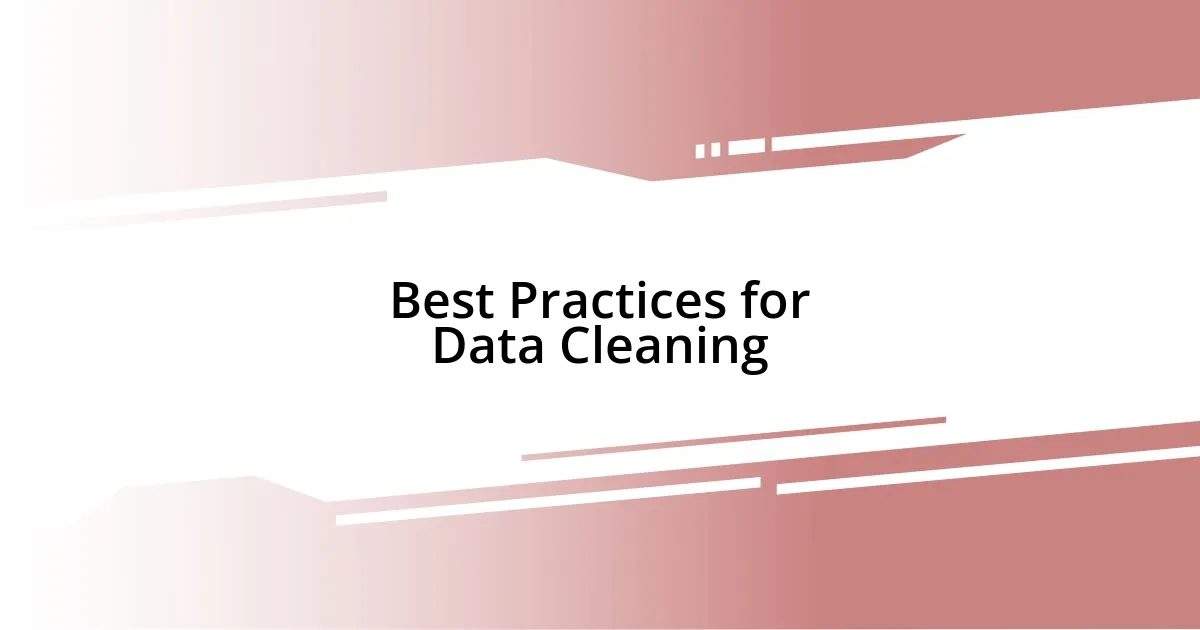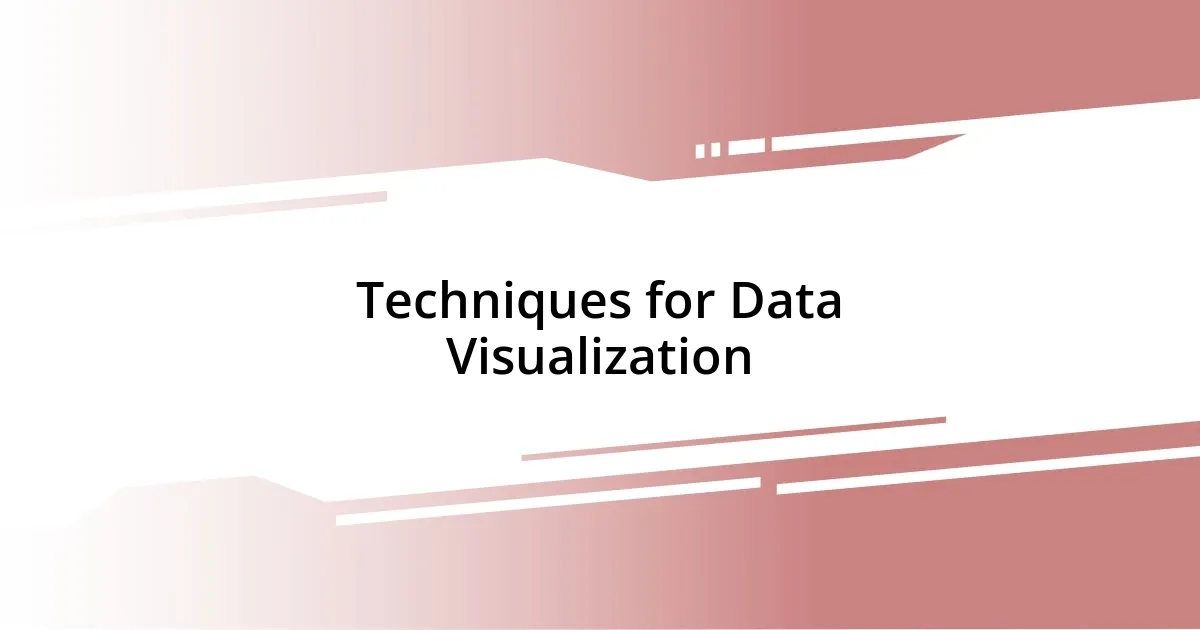Key takeaways:
- Break down data analysis into manageable pieces, focusing on specific goals to avoid aimless exploration.
- Utilize effective tools like Excel, Python, and visualization software to enhance data analysis and presentation.
- Follow a structured workflow (data collection, cleaning, analysis, visualization) to improve efficiency and clarity.
- Engage in continuous learning through courses, workshops, and personal projects to adapt to the evolving data landscape.

Understanding Data Analysis Basics
Data analysis starts with understanding the data you’re working with. I remember when I first began my journey; I was overwhelmed by the sheer volume of numbers. It’s like standing at the edge of a vast ocean—where do you even begin? I quickly learned that categorizing data into manageable pieces made it more approachable, like dipping my toes in before diving in.
Next, it’s essential to know why you’re analyzing the data in the first place. Ask yourself: What question am I trying to answer? During a project early on, I focused on predicting customer behavior. It felt daunting, yet identifying my goal helped narrow down the types of data I needed. This clarity is crucial; without it, analysis can feel aimless and confusing.
Data visualization tools are your best friends in this process. I vividly recall creating my first chart, transforming a tedious spreadsheet into something vibrant and informative. It energized me! Visuals can suddenly reveal patterns that are invisible in raw data. Have you ever noticed how a simple graph can make complex information so much clearer? It’s a game changer, and embracing this aspect can elevate your analysis dramatically.

Essential Tools for Data Analysis
When it comes to tools, I can’t stress enough how foundational they are for effective data analysis. My go-to is Excel; it’s incredibly versatile. I remember the first time I used pivot tables – it felt like unlocking a secret level in a video game! Suddenly, I could summarize vast amounts of data with just a few clicks. But if you’re looking to dive deeper, programming languages like Python offer powerful libraries like Pandas and Matplotlib. These tools enhance your analytical capabilities, allowing you to manipulate and visualize data in truly innovative ways.
Here’s a snapshot of essential tools that I believe every data analyst should consider:
- Excel: Great for quick analyses and pivot tables.
- Python: Versatile for data manipulation, especially with libraries like Pandas.
- R: Perfect for statistical analysis and complex visualizations.
- Tableau: User-friendly for creating stunning visual representations.
- SQL: Critical for querying relational databases effectively.
- Google Analytics: Indispensable for web data analysis and understanding user behavior.
Choosing the right tools can make all the difference. I still find excitement in discovering new software that streamlines my workflow or offers fresh insights. It’s like having a well-stocked toolbox; the right instrument can turn a tedious task into an intuitive experience.

Developing a Data Analysis Workflow
Developing a data analysis workflow is a journey where each step brings clarity and focus. I recall a time when I organized my workflow in stages: data collection, cleaning, analysis, and visualization. This structured approach transformed my chaotic process into something coherent. By breaking it down, I found it easier to tackle each phase, resulting in a smoother experience overall.
In my experience, I always prioritize data cleaning as a foundational step. It’s astonishing how much time I’ve saved by dedicating effort to this part alone—removing duplicates, handling missing values, and ensuring the data is in a usable format. Once I invested that time upfront, it paid off immensely during the analysis phase. My analyses became richer and more accurate, revealing insights that I could have easily overlooked otherwise.
Lastly, I think about revisiting and refining my workflow regularly. When I first started, I didn’t realize that every analysis could inform my next one. Now, I assess what worked, what didn’t, and adjust my approach accordingly. This reflective practice has made my workflow more efficient over time, and I’ve learned to embrace the iterative nature of data analysis.
| Workflow Stage | Key Focus |
|---|---|
| Data Collection | Gathering relevant data from multiple sources. |
| Data Cleaning | Ensuring data quality by removing inaccuracies. |
| Data Analysis | Extracting insights using statistical methods. |
| Data Visualization | Creating visuals to communicate findings clearly. |

Best Practices for Data Cleaning
When it comes to data cleaning, my experience has shown that establishing a systematic approach is crucial. I remember when I first faced a dataset riddled with inconsistencies; it felt overwhelming. But breaking down the process into manageable steps—like sorting through duplicates, standardizing formats, and dealing with missing values—transformed a daunting task into a clear path forward. This method not only saved me time in the long run, but also made my analyses significantly more reliable.
One best practice I can’t emphasize enough is the importance of documenting your data cleaning process. I learned this the hard way when I realized I couldn’t reproduce my earlier work. Each time I cleaned a dataset, I began to note what I did and why, which revealed patterns and errors I hadn’t noticed before. It may seem tedious, but this practice ensures that I maintain consistency in my approach and makes it easier to communicate my findings to others. Do you ever find yourself stuck with unclear results? Keeping a log can help alleviate that frustration!
Finally, I believe that a keen eye for detail is essential in data cleaning. For me, it’s almost like detective work—unearthing hidden anomalies and anomalies. I recall an instance where I noticed a few outlier values that didn’t fit the broader dataset. What if I had overlooked them? It turned out those values were the key to uncovering a significant trend. It’s fascinating how much insight can be gained simply by being thorough and curious about the data you are working with.

Techniques for Data Visualization
When I think about data visualization, one technique that always stands out to me is the use of color effectively. I can’t tell you how many times I’ve been drawn to a chart simply because the colors were vibrant and well-chosen. Colors can convey emotions and emphasize importance—like using red for warnings or green for positive outcomes. Have you ever stared at a dull graph and wished it was more engaging? A thoughtful color palette can make a world of difference, pulling the viewer in and making the data come alive.
Another approach I cherish is the simplicity of design. I once created a visualization that included every detail I could muster—labels, legends, and intricate designs. It felt overwhelming, and I realized that less is often more. By focusing on the key message and stripping away non-essential elements, my stories became clearer. Just like in life, sometimes we need to declutter. Have you noticed how a straightforward bar chart can often communicate a point more effectively than a busy infograph? Embracing minimalism in my visuals has resonated deeply with my audience.
Lastly, I’m a firm believer in interactivity in data visuals. I remember when I first experimented with interactive dashboards; it was a game-changer! Being able to hover over data points and explore details on demand drew viewers deeper into the story I was telling. It invites engagement, making the data feel less like a static presentation and more like a conversation. Have you tried interactive visuals in your own work? They can elevate your analysis, letting users explore and find their own insights in a way that static images simply can’t achieve.

Interpreting Data Analysis Results
Interpreting data analysis results isn’t just about crunching numbers; it’s about making sense of what those numbers reveal. I remember the first time I presented findings to a team. My data looked impressive on paper, but translating those statistics into actionable insights was daunting. I learned that the narrative behind the numbers is just as crucial. What story does the data tell, and how can I connect the dots for my audience?
One powerful approach I’ve adopted is using context to interpret results. For instance, while analyzing customer satisfaction scores, I realized that a spike in complaints around a particular holiday wasn’t a failure but rather an opportunity. This context shifted how I presented my findings—highlighting an increase in demand rather than a drop in service. Have you ever considered how context can change your viewpoint on data? It can transform a questionable trend into a potential growth strategy.
As I delve deeper into analysis, I’ve found that visualizing results enhances understanding significantly. I once had an overwhelming set of figures—percentages and numbers that felt like they were losing meaning. By creating a simple graph, everything clicked. Suddenly, the trends were obvious, and I could engage my audience more effectively. It’s amazing how one clear visual can replace paragraphs of explanation! How often do you rely on visuals to convey your findings? Embracing this practice has become essential in my data interpretation process.

Continuous Learning in Data Analysis
Continuous learning is a cornerstone in the field of data analysis. I vividly recall the thrill of attending my first data science conference. The insights I gained from seasoned professionals reignited my passion for learning. I realized that the landscape of data is always shifting. Each new tool, method, or study pushed me to evolve my skills, and that excitement is infectious! Have you ever left a workshop buzzing with new ideas that made you want to dive right back into your projects?
I also prioritize seeking out online courses and webinars that cater to my interests. Just a few months back, I enrolled in a deep learning course that completely transformed how I approach complex datasets. The challenge was steep, but the satisfaction of conquering new concepts boosted my confidence immensely. Honestly, each lesson felt like a mini milestone. Have you tried immersing yourself in an online community? Collaborating with peers who are equally passionate can provide new perspectives and keep that motivation alive.
In addition to formal education, I find that experimenting with personal projects has been incredibly enlightening. Last summer, I took on a passion project analyzing local environmental data. It was a departure from my usual work, but that experience taught me more about data collection and manipulation than I could’ve learned in any textbook. The mistakes I made along the way became invaluable lessons. Have you ever learned more from a challenge than from your successes? Embracing those moments of growth has become a vital part of my continuous learning journey.














